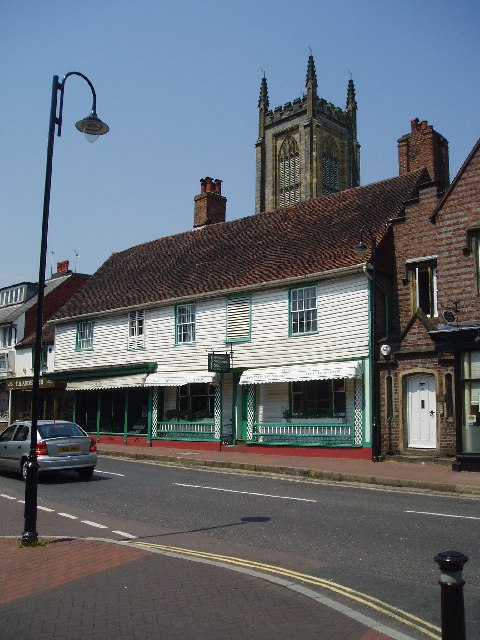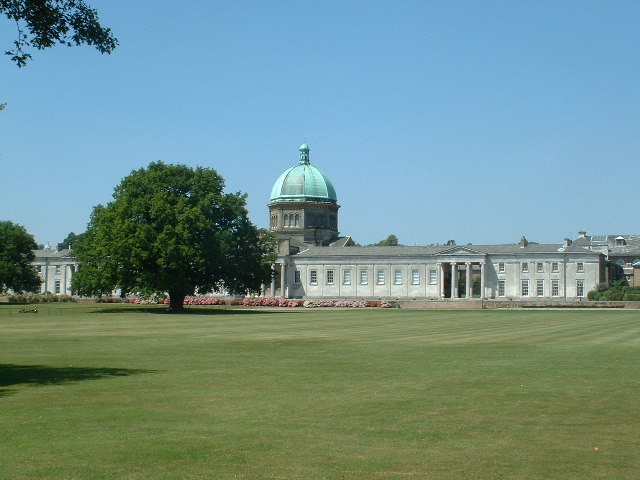|
Alec Ogilvie
''For the businessman, see Alec Ogilvie (businessman).'' Lieutenant-Colonel Alexander "Alec" Ogilvie CBE (8 June 1882 – 18 June 1962) was an early British aviation pioneer, a friend of the Wright Brothers and only the seventh British person to qualify as a pilot. During World War I Ogilvie served with the Royal Naval Air Service before transferring to the Royal Air Force on its creation in 1918. During the War he was chiefly employed in technical posts and after the War he worked as a consulting aeronautical engineer. Early life Alexander Ogilivie was born in 1882 in the Marylebone district of London. He was educated at Rugby School and Cambridge University. Early aviator In 1908 Ogilvie watched Wilbur Wright carry out a demonstration flight in France and within two months he had ordered a Wright Biplane for himself. Before the biplane was delivered in 1909 he practised flying at Friston, Sussex using a glider. Ogilvie established a flying base on Camber Sands near Rye, ... [...More Info...] [...Related Items...] OR: [Wikipedia] [Google] [Baidu] |
Marylebone
Marylebone (usually , also , ) is a district in the West End of London, in the City of Westminster. Oxford Street, Europe's busiest shopping street, forms its southern boundary. An ancient parish and latterly a metropolitan borough, it merged with the boroughs of Westminster and Paddington to form the new City of Westminster in 1965. Marylebone station lies two miles north-west of Charing Cross. History Marylebone was originally an Ancient Parish formed to serve the manors (landholdings) of Lileston (in the west, which gives its name to modern Lisson Grove) and Tyburn in the east. The parish is likely to have been in place since at least the twelfth century and will have used the boundaries of the pre-existing manors. The boundaries of the parish were consistent from the late twelfth century to the creation of the Metropolitan Borough which succeeded it. Etymology The parish took its name from its church, dedicated to St Mary; the original church was built on th ... [...More Info...] [...Related Items...] OR: [Wikipedia] [Google] [Baidu] |
Cambridge University
, mottoeng = Literal: From here, light and sacred draughts. Non literal: From this place, we gain enlightenment and precious knowledge. , established = , other_name = The Chancellor, Masters and Scholars of the University of Cambridge , type = Public research university , endowment = £7.121 billion (including colleges) , budget = £2.308 billion (excluding colleges) , chancellor = The Lord Sainsbury of Turville , vice_chancellor = Anthony Freeling , students = 24,450 (2020) , undergrad = 12,850 (2020) , postgrad = 11,600 (2020) , city = Cambridge , country = England , campus_type = , sporting_affiliations = The Sporting Blue , colours = Cambridge Blue , website = , logo = University of Cambridge lo ... [...More Info...] [...Related Items...] OR: [Wikipedia] [Google] [Baidu] |
East Grinstead
East Grinstead is a town in West Sussex, England, near the East Sussex, Surrey, and Kent borders, south of London, northeast of Brighton, and northeast of the county town of Chichester. Situated in the extreme northeast of the county, the civil parish has an area of . The population at the 2011 Census was 26,383. Nearby towns include Crawley and Horley to the west, Tunbridge Wells to the east and Redhill, Surrey, Redhill and Reigate to the northwest. The town is contiguous with the village of Felbridge to the northwest. Until 1974 East Grinstead was in East Sussex, before joining together with Haywards Heath and Burgess Hill as the Mid-Sussex district of West Sussex. The town is on the Greenwich Meridian. It has many historic buildings, and the Weald and Ashdown Forest lie to the south-east. Places of interest The High Street contains one of the longest continuous runs of 14th-century timber-framed buildings in England. Other notable buildings in the town include Sackville ... [...More Info...] [...Related Items...] OR: [Wikipedia] [Google] [Baidu] |
Limited Company
In a limited company, the liability of members or subscribers of the company is limited to what they have invested or guaranteed to the company. Limited companies may be limited by Share (finance), shares or by guarantee. In a company limited by shares, the liability of members is limited to the unpaid value of shares. In a company limited by guarantee, the liability of owners is limited to such amount as the owners may undertake to contribute to the assets of the company, in the event of being wound up. The former may be further divided in public companies (public limited company, public limited companies) and private companies (private limited company, private limited companies). Who may become a member of a private limited company is restricted by law and by the company's rules. In contrast, anyone may buy shares in a public limited company. Limited companies can be found in most countries, although the detailed rules governing them vary widely. It is also common for a distinct ... [...More Info...] [...Related Items...] OR: [Wikipedia] [Google] [Baidu] |
Major (United Kingdom)
Major (Maj) is a military rank which is used by both the British Army and Royal Marines. The rank is superior to captain and subordinate to lieutenant colonel. The insignia for a major is a crown. The equivalent rank in the Royal Navy is lieutenant commander, and squadron leader in the Royal Air Force. History By the time of the Napoleonic wars, an infantry battalion usually had two majors, designated the "senior major" and the "junior major". The senior major effectively acted as second-in-command and the majors often commanded detachments of two or more companies split from the main body. The second-in-command of a battalion or regiment is still a major. File:British-Army-Maj(1856-1867)-Collar Insignia.svg, 1856 to 1867 major's collar rank insignia File:British-Army-Maj(1867-1880)-Collar Insignia.svg, 1867 to 1880 major's collar rank insignia File:British&Empire-Army-Maj(1881-1902).svg, 1881 to 1902 major's shoulder rank insignia During World War I, majors wore the foll ... [...More Info...] [...Related Items...] OR: [Wikipedia] [Google] [Baidu] |
Robert Brooke-Popham
Air Chief Marshal Sir Henry Robert Moore Brooke-Popham, (18 September 1878 – 20 October 1953) was a senior commander in the Royal Air Force. During the First World War he served in the Royal Flying Corps as a wing commander and senior staff officer. Remaining in the new Royal Air Force (RAF) after the war, Brooke-Popham was the first commandant of its Staff College at Andover and later held high command in the Middle East. He was Governor of Kenya in the late 1930s. Most notably, Brooke-Popham was Commander-in-Chief of the British Far East Command until being replaced a few weeks before Singapore fell to Japanese troops. Family life and education Brooke-Popham was born in England in the Suffolk village of Mendlesham on 18 September 1878. His parents were Henry Brooke, a country gentleman of Wetheringsett Manor in Suffolk, and his wife Dulcibella who was the daughter of Robert Moore, a clergyman. Brooke-Popham's education was not atypical of a man entering the British offi ... [...More Info...] [...Related Items...] OR: [Wikipedia] [Google] [Baidu] |
Hugh Trenchard, 1st Viscount Trenchard
Marshal of the Royal Air Force Hugh Montague Trenchard, 1st Viscount Trenchard, (3 February 1873 – 10 February 1956) was a British officer who was instrumental in establishing the Royal Air Force. He has been described as the "Father of the Royal Air Force." During his formative years, Trenchard struggled academically, failing many examinations and only just succeeding in meeting the minimum standard for commissioned service in the British Army. As a young infantry officer, Trenchard served in India and with the outbreak of the Second Boer War, Boer War, he volunteered for service in South Africa. While fighting the Boers, Trenchard was critically wounded and as a result of his injury, he lost a lung, was partially paralysed and returned to Great Britain. On medical advice, Trenchard travelled to Switzerland to recuperate and boredom saw him taking up bobsleighing. After a heavy crash, Trenchard found that his paralysis was gone and that he could walk unaided. Following furt ... [...More Info...] [...Related Items...] OR: [Wikipedia] [Google] [Baidu] |
Sopwith Snipe
The Sopwith 7F.1 Snipe was a British single-seat biplane fighter of the Royal Air Force (RAF). It was designed and built by the Sopwith Aviation Company during the First World War, and came into squadron service a few weeks before the end of the conflict, in late 1918. The Snipe was not a fast aircraft by the standards of its time, but its excellent climb and manoeuvrability made it a good match for contemporary German fighters. It was selected as the standard postwar single-seat RAF fighter and the last examples were not retired until 1926. Design and development In April 1917, Herbert Smith, the chief designer of the Sopwith Company, began to design a fighter intended to be the replacement for Sopwith's most famous aeroplane, the Sopwith Camel.Lumsden ''Aeroplane Monthly'' October 1990, p. 588. The design, called Snipe by Sopwith, was in its initial form a single-bay biplane, slightly smaller than the Camel and intended to be powered by similar engines. The pilot sat higher ... [...More Info...] [...Related Items...] OR: [Wikipedia] [Google] [Baidu] |
Air Ministry
The Air Ministry was a department of the Government of the United Kingdom with the responsibility of managing the affairs of the Royal Air Force, that existed from 1918 to 1964. It was under the political authority of the Secretary of State for Air. Organisations before the Air Ministry The Air Committee On 13 April 1912, less than two weeks after the creation of the Royal Flying Corps (which initially consisted of both a naval and a military wing), an Air Committee was established to act as an intermediary between the Admiralty and the War Office in matters relating to aviation. The new Air Committee was composed of representatives of the two war ministries, and although it could make recommendations, it lacked executive authority. The recommendations of the Air Committee had to be ratified by the Admiralty Board and the Imperial General Staff and, in consequence, the Committee was not particularly effective. The increasing separation of army and naval aviation from 1 ... [...More Info...] [...Related Items...] OR: [Wikipedia] [Google] [Baidu] |
Wing Commander (rank)
Wing commander (Wg Cdr in the RAF, the IAF, and the PAF, WGCDR in the RNZAF and RAAF, formerly sometimes W/C in all services) is a senior commissioned rank in the British Royal Air Force and air forces of many countries which have historical British influence, including many Commonwealth countries but not including Canada (since Unification) and South Africa. It is sometimes used as the English translation of an equivalent rank in countries which have a non-English air force-specific rank structure. It ranks immediately above squadron leader and immediately below group captain. It has a NATO ranking code of OF-4. It is equivalent to commander in the Royal and United States Navies, as well as to lieutenant colonel in the British Army, the Royal Marines, and the United States Army, Air Force and Marine Corps. The equivalent rank in the Women's Auxiliary Air Force and the Women's Royal Air Force (until 1968) and in Princess Mary's Royal Air Force Nursing Service (unti ... [...More Info...] [...Related Items...] OR: [Wikipedia] [Google] [Baidu] |
RAF Eastchurch
Royal Air Force Eastchurch or more simply RAF Eastchurch (formerly RNAS Eastchurch) is a former Royal Air Force station near Eastchurch village, on the Isle of Sheppey, Kent, England. The history of aviation at Eastchurch stretches back to the first decade of the 20th century when it was used as an airfield by members of the Royal Aero Club. The area saw the first flight by a British pilot in Britain. In 1910 it was operated by the Royal Navy as a training aerodrome and it was known as the Naval Flying School, Eastchurch. In the 1910s the airfield was designated Royal Naval Air Station Eastchurch. With the amalgamation of the Royal Naval Air Service and the Royal Flying Corps on 1 April 1918, the station was transferred to the newly formed Royal Air Force and was re-designated Royal Air Force Eastchurch. Early civilian aviation The members of the Aero Club of Great Britain established their first flying ground near Leysdown on the Isle of Sheppey in 1909. One of the Club's me ... [...More Info...] [...Related Items...] OR: [Wikipedia] [Google] [Baidu] |
Squadron Commander
Squadron may refer to: * Squadron (army), a military unit of cavalry, tanks, or equivalent subdivided into troops or tank companies * Squadron (aviation), a military unit that consists of three or four flights with a total of 12 to 24 aircraft, depending on the type of aircraft and the air force, naval or army air service * Squadron (naval), a military unit of three to ten warships that may be part of a larger task group, task force, or a naval fleet; also an administrative unit for warships like submarines that usually operate alone * ''Squadron'' (TV series), a 1982 BBC television series * Squadron, Ellenoff, Plesent & Sheinfeld, a New York City law firm that practiced from 1970 to 2002 * Daniel Squadron (born November 9, 1979), former New York elected official * Squadron Supreme, a fictional superhero team appearing in Marvel Comics * '' Star Wars: Squadrons'', a video game set in the Star Wars universe that simulates spaceship combat See also *Squad (other) A sq ... [...More Info...] [...Related Items...] OR: [Wikipedia] [Google] [Baidu] |







